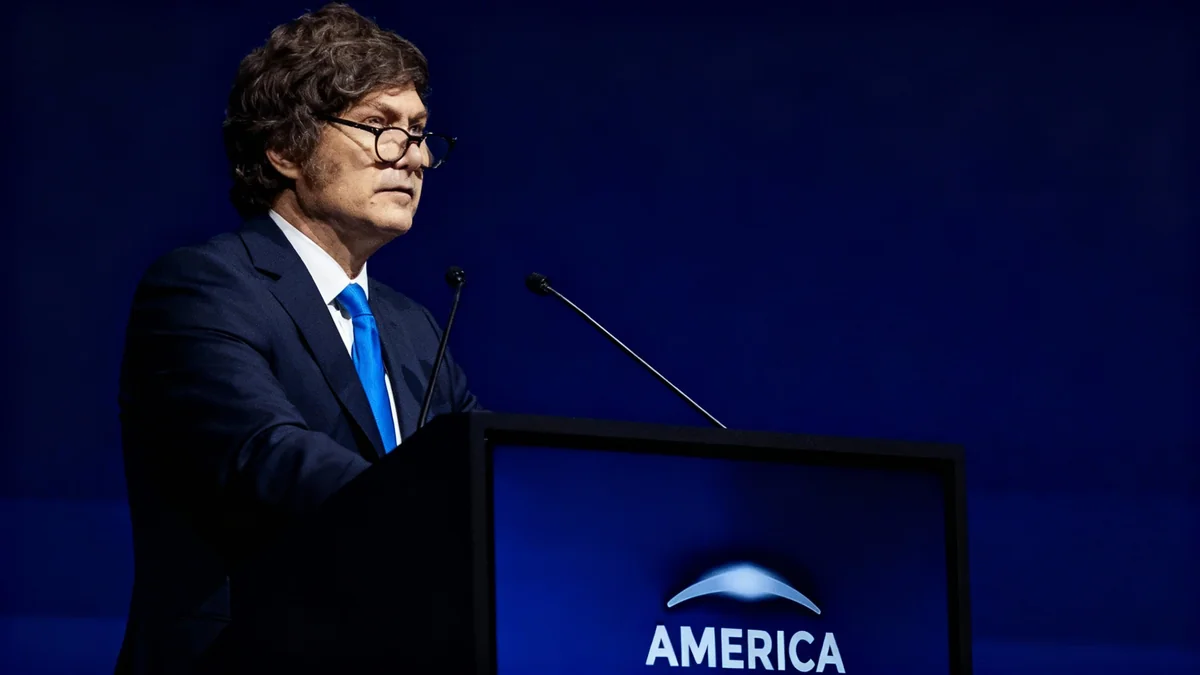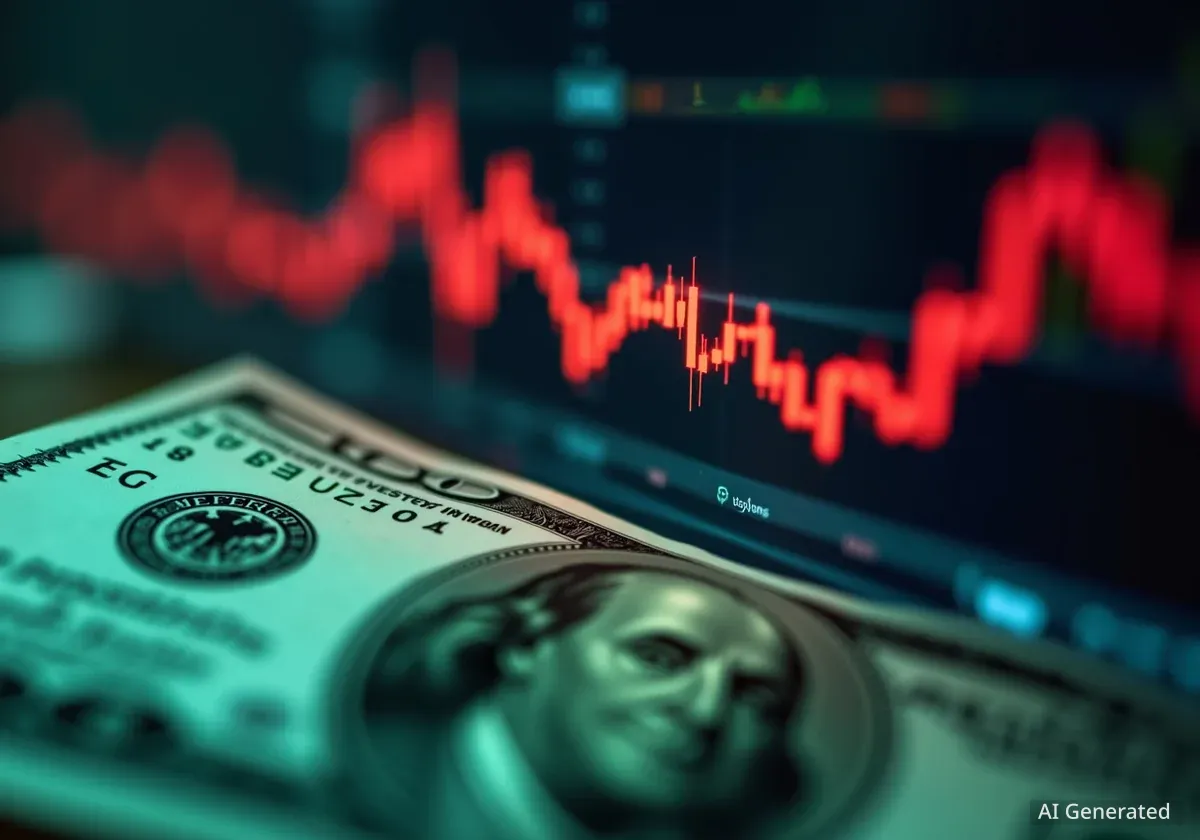Ray Dalio, the founder of Bridgewater Associates, has issued a stark warning about the United States' fiscal trajectory, stating that the country's debt level is “unsustainable.” Speaking at a recent forum, the billionaire investor cautioned that this situation poses a significant threat to the existing monetary order and could have far-reaching consequences for the U.S. economy.
Dalio also advised investors to consider diversifying their portfolios, specifically recommending an allocation to gold as a hedge against potential currency instability. His comments highlight growing concerns among prominent financial figures regarding the long-term impact of rising government debt in the world's largest economy.
Key Takeaways
- Bridgewater founder Ray Dalio described U.S. debt as “unsustainable” during a panel at the FutureChina Global Forum 2025.
- He warned that the fiscal imbalance threatens the current global monetary order.
- Dalio projects the U.S. will spend $7 trillion in 2025 while only generating $5 trillion in revenue, creating a $2 trillion deficit.
- He recommended that investors allocate about 10% of their portfolios to gold as a diversification strategy.
- Dalio noted a potential supply-demand imbalance for U.S. debt, as international demand may not absorb the necessary issuance.
Dalio's Assessment of US Fiscal Health
Speaking on a panel at the FutureChina Global Forum 2025, Ray Dalio provided a critical analysis of the United States' financial position. He argued that the country's spending significantly outpaces its income, creating a structural problem that is difficult to resolve. According to reports from Bloomberg, Dalio stated that the U.S. is “over-spending” at a rate six times its revenue growth.
This imbalance, he explained, is not easily correctable. Dalio pointed out that for “various reasons,” the U.S. “cannot cut back on its spending,” suggesting that political and social obligations make significant fiscal consolidation unlikely in the near future. This creates a cycle where the country must continuously issue more debt to cover its expenses.
“You’re seeing the threat to the monetary order,” Dalio said during the event. “Other factors together will determine whether we’re seeing the end of the entire U.S. empire.”
His comments reflect a growing concern over the sustainability of sovereign debt in major economies, particularly in the United States, which serves as the anchor of the global financial system.
The Numbers Behind the Warning
Dalio provided specific figures to illustrate the scale of the fiscal challenge. He projected that in 2025, the U.S. government will spend approximately $7 trillion while only collecting around $5 trillion in revenue. This leaves a shortfall of $2 trillion that must be financed through borrowing.
US Fiscal Imbalance at a Glance
- Projected 2025 Spending: $7 trillion
- Projected 2025 Revenue: $5 trillion
- Annual Deficit: $2 trillion
- Total Debt to be Sold (including old debt and interest): $12 trillion (timeframe not specified)
The issue is compounded when considering existing obligations. Dalio explained that when factoring in interest payments and the need to roll over old debt, the total amount of debt the U.S. must sell reaches an estimated $12 trillion. While he did not specify a timeframe for this figure, it underscores the massive financing needs of the U.S. government.
This high volume of debt issuance leads to another critical problem: a potential mismatch between supply and demand. According to Dalio, the global appetite for U.S. debt may not be sufficient to absorb this level of supply. “The rest of the world does not have that same sort of demand for that debt, and that creates a supply-demand imbalance,” he noted.
Implications for Investors and Global Markets
Given his outlook, Dalio offered specific advice for investors seeking to protect their wealth. He emphasized the growing importance of assets that are not tied to traditional government-issued currencies. “We are going to see non-fiat currencies become more important store of wealth and money,” he stated.
What are Non-Fiat Currencies?
Non-fiat currencies are assets that hold value but are not issued or backed by a central government. The most prominent example is gold, which has been used as a store of value for centuries. In the modern era, this category can also include cryptocurrencies like Bitcoin, although Dalio's recent comments focused specifically on gold.
He recommended that investors hold approximately 10% of their portfolios in gold. This is not a speculative bet but a strategic move for diversification. Gold often performs well during periods of economic uncertainty, inflation, or when confidence in fiat currencies like the U.S. dollar wanes. Following his remarks, gold futures saw a modest increase of about 0.10%.
The potential supply-demand imbalance for U.S. bonds could have significant consequences. If international buyers, such as foreign central banks and investors, reduce their purchases of U.S. debt, the U.S. Treasury may be forced to offer higher interest rates to attract buyers. This would increase borrowing costs for the government, businesses, and consumers, potentially slowing economic growth.
The Broader Context of US Debt
Dalio's warnings come at a time when U.S. national debt is under intense scrutiny. The total public debt has surpassed $34 trillion, and projections from the Congressional Budget Office (CBO) show it continuing to rise over the next decade. The CBO forecasts that debt held by the public will reach 116% of GDP by 2034, the highest level ever recorded.
Several factors contribute to this trend:
- Rising Interest Rates: The Federal Reserve's efforts to combat inflation have led to higher interest rates, significantly increasing the cost of servicing the national debt.
- Government Spending: Major spending programs related to social security, healthcare, and defense continue to drive expenditures upward.
- Demographic Shifts: An aging population places greater demand on programs like Social Security and Medicare, further straining the federal budget.
The concerns raised by Ray Dalio are shared by a growing number of economists and policymakers. The long-term stability of the U.S. dollar's role as the world's primary reserve currency depends heavily on the perceived creditworthiness of the U.S. government. A failure to address the underlying fiscal imbalance could, as Dalio suggests, challenge the very foundation of the current monetary system.





